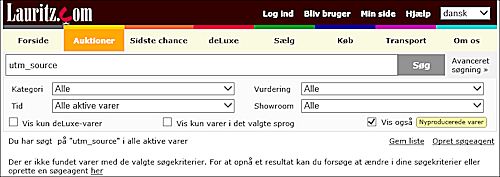
Make sure to map out your UTM naming convention ahead of time, being careful not to repeat yourself.

Therefore, it’s important to be descriptive enough so you’ll remember exactly what campaign, ad, or traffic source your UTM parameters refer to.ĭon’t Repeat Yourself. Keep in mind that the purpose of UTM parameters is to help you understand where your traffic is coming from. Here are a few tips to keep in mind.īe Descriptive. UTM parameters help you answer questions about where your traffic came from, but if you don’t remember what they mean or use them inconsistently, you won’t get the most out of the data.

#Utm source software
This tells you that phone tracking software is the keyword responsible for the click to your site (and in case you were wondering, %20 is the set of characters used to encode a space in a URL!). Thankfully, you can set up Google or Bing to automatically append the UTM Term to your destination URL. UTM terms are used to identify which keywords from paid search campaigns generate clicks. Here are some examples that showcase the flexibility of the UTM Content parameter: And if you need this level of detail, you can add it to your campaigns. Designating the UTM Content parameter will allow you get very specific information about which marketing assets are working. This optional parameter can help you know what particular ad, creative piece, or call to action generated the click. You might choose to use the exact name of a Google campaign as the parameter or come up with a uniquely identifiable campaign name for an email or social media campaign, like spring_sale. Like other UTM parameters, there is a lot of flexibility with naming conventions. This parameter is used to indicate a specific advertising campaign. Here are some examples of UTM Medium tags: Google paid ads automatically designate the UTM Medium as cpc (cost per click) and some organic social sites designate the UTM Medium as referral, while others tag it as social. This parameter is used to specify how traffic came to you. Here are some examples of common UTM Source tags:

This parameter usually identifies the site your traffic came from, but can also be used to identify traffic from an email campaign or newsletter. There are 5 different UTM parameters available. UTM parameters are added to your destination URL and are can be used to identify what site your visitors came from, if you are paying for those visits, and exactly what ads and keywords caused them to visit your site. But what exactly are UTM parameters? How do you set them up? And how do you capture that data? Read on and learn everything you need to know to set up and use UTM parameter data to improve your marketing. Setting up UTM parameters is the foundation of tracking the effectiveness email and social media marketing campaigns as well as paid search and social advertising spending.


 0 kommentar(er)
0 kommentar(er)
